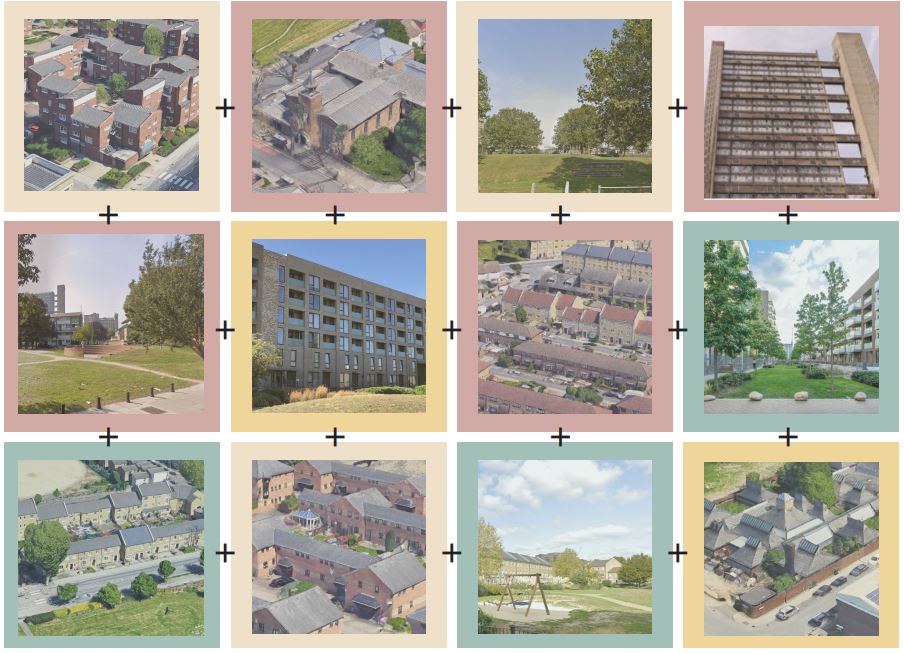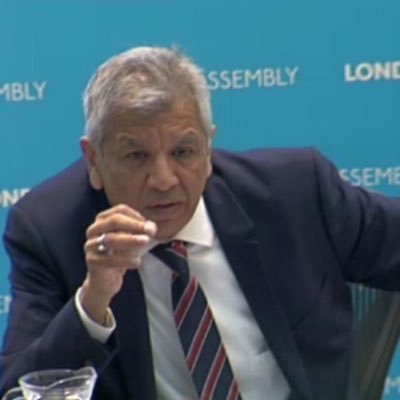On a hot Sunday afternoon in June, housing association tenants covered their flats in banners and protested outside their building. The residents live in Jura House, on the Aberfeldy estate in Tower Hamlets, which is halfway through a 20-year regeneration led by Poplar HARCA in partnership with EcoWorld London.
Much is written about the controversies of estate regeneration projects, but this protest was different. Impatient for change, residents here were protesting that regeneration is not happening fast enough. The proposals for new homes, parks, shops and walking and cycling connections do not represent ‘gentrification’ in their eyes, but as better future for and community, and they want to it happen for their children, before they grow up.
Aberfeldy, in Poplar, sits within the constituency I represent, and the community here face significant disadvantages in terms of access to employment, health and wellbeing. The social housing in Aberfeldy is a post-war development, built to replace the Victorian housing destroyed in the blitz. By the time it was completed in the 1970s, there was already a recognition that the estate was not the success the planners hoped it would be. Divided by roads, many Londoners would never even know this neighbourhood existed: the A12 and A13 surround the site, physically severing it from the rest of Poplar. Today, much of the housing is visibly dated and tired, and Jura House has seen better days. In 2009, the decision was made to regenerate the estate.
Since 2012, almost 700 homes have been delivered, including 165 homes for social rent, alongside a much-loved new public park called East India Green, complete with art created with the local community. This summer a further 223 homes will start to be handed over to new occupants and the first new shops on Aberfeldy Street will open, along with a new GP surgery, community centre, and a nursery. However, this is the last phase of the scheme that currently has full planning permission.
Due to the success of the initial phases, Poplar HARCA and EcoWorld London decided to develop a new, more ambitious, masterplan for the wider area and a planning application is expected later this year. Poplar HARCA have been talking to residents throughout. A Residents Steering Group meets regularly with the project team, including the architects and planners, and the extremely detailed, and at times robust, feedback from these discussions has informed the emerging plans. Alongside this, public consultations have collected feedback from residents across Poplar.
These efforts to understand residents aspirations has resulted in huge public backing for change. When a ballot was held last year, 93% of residents endorsed the regeneration plans, on a 91% turnout. An impressive and almost unprecedented mandate in favour of proceeding with estate regeneration.
The proposals go beyond replacing and increasing the existing council housing in Aberfeldy, which is of course funded in large part by new homes for private sale – a necessary trade-off that the community understands and endorses. Alongside providing up to 1,600 new homes, the Aberfeldy New Masterplan is designed to fulfil several strategic objectives. Top of this list is improving connectivity across Poplar, piece address the lack of safe connections across the A12, A13 and the River Lea, that has left residents here physically and mentally disconnected from the rest of London for generations. Improved walking and cycling routes along a new green corridor lined with more welcoming and better-connected public parks and spaces are designed to turn Aberfeldy from an estate into a place. This is underpinned by one big move – to close a vehicular underpass and transform it into a safe, vibrant cycling and walking link. These elements of the masterplan are popular, particularly with young people, who want a safer neighbourhood where they can walk or cycle to school, rather than be driven there by their parents.
So why are residents protesting? Well, after many years of talking about regeneration, residents want to see the promises of positive change delivered, and fast! Witnessing your neighbours being successfully rehomed in the earlier phases while you face the prospect of waiting for years, along with the added uncertainty of not knowing whether the masterplan will happen at all, is understandably not a welcome one.
A masterplan on this scale is a complicated and costly process. The bigger and more ambitious the plan, the more social and economic objectives it seeks to achieve, the more complicated and lengthy the process becomes, and the difficulty of balancing the competing and often incompatible priorities of communities, planners, policy makers and politicians become more pronounced. As time moves on so does the political weather, with individuals, councils and political priorities changing, along – potentially – with the prospects of support needed for the project to be delivered. Satisfying councillors and planners that you have adequately met, or given acceptable reasons for why you can’t, the ever-growing list of national, London and local planning regulations, is increasingly technical and time consuming, and with all parts of the scheme impacting the rest, difficulty in one area can return you back to square one on others.
This challenge is greater too on projects where some of the wider regeneration aspirations can only be delivered with public funding, and these funds often have fixed deadlines against delivered outcomes. All of this can only be met if the different private and public organisations involved are on the same page, working to achieve the same goal and mindful of the bigger picture. It is fair to say that isn’t always the case. Is our planning system capable of delivering complex projects such as this one?
The planning system is often criticised for being unresponsive to the needs and voices of local people when a scheme has been approved against the noisy opposition of (usually a small number of) residents. Perhaps a truer measure would be if big bold, regeneration plans that have the support of a community prove too complicated for the planning system to deliver.
The residents of Aberfeldy know what they want. As their banners adorning Jura House called out: “More green spaces”, “better shops”, “new homes, new parks, safer streets and subways”. “Why are we waiting?” asked another. The largest banner, held aloft by two residents stated, “pull us down now”. Jura house residents have told us what they need, and meeting their aspirations successfully and quickly is a test of whether our complicated and labyrinthine planning system is fit for purpose.
The Labour Party created the planning system and continues to defend it against the Conservative plans to overhaul it to make it easier for developers to build. Where we have the power to do so, it is vital Labour demonstrates that the planning system as it is can deliver for communities like Aberfeldy.

